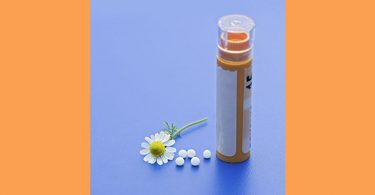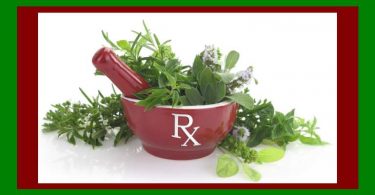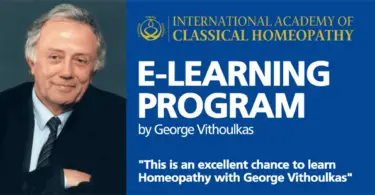Abstract: As homoeopathy bears a specialty and originality in the field of medicine, its mode of administration of medicines also bears a specialty. Homoeopathic medicines can be administered through various routes to bring a curative effect, such as oral route, olfaction (inhalation through nose or mouth), application to the skin, application of medicine through milk of mother or wet nurse, etc. Among these, the oral route is the commonest route for administration of medicines. But the other routes are also adopted in some cases as per the requirement of case. Hahnemann has emphasized the importance of each of these modes in his Organon of Medicine.
Homoeopathy is alternative system of medicinal therapeutics discovered in 1796 by the great physician Dr. Christian Friedrich Samuel Hahnemann. It is based upon the principle of “Similia Similibus Curantur”- ‘let likes be cured by likes’, which signifies that a remedy selected for the treatment of a natural disease shall be the one that is capable of producing a range of similar symptoms in a healthy person. Therefore, the precondition to call a substance a homeopathic remedy is its ability to produce similar set of symptoms on healthy human volunteers during the course of its clinical trial (Human Pathogenic Trial/ drug proving).1
The administration of the homoeopathic medicines is governed by three basic principles:
- Law of similia- This law tells that the medicine should be employed on the basis of similarity of symptoms. (let likes be cured by likes). It means that a substance that causes a set of symptoms in a healthy person acts as a curative medicine when given to a sick person with similar symptoms.2
- Law of simplex- According to this law, only one single, simple homoeopathic medicine should be administered at a time. The single most indicated remedy will offer the fastest, greatest, and most lasting therapeutic benefit.2
- Law of minimum– This principle holds that only the very minimum amount of medication should be given to elicit a response.2 Minimum dose avoids unwanted aggravation and ensures that no damage occurs to any vital organ of body, thereby preventing any risk of drug effects or drug addiction.
The homoeopathic medicines help to fight against diseases by assisting the body’s natural ability to provide relief for symptoms of the illness, rather than suppressing the symptoms.3
This therapy adopts an individualistic and holistic approach towards the sick individual. A homoeopathic doctor does not treat in the name of disease, rather the treatment is targeted against the “patient” who is suffering from a particular disease.4
The preparation of homoeopathic medicines is done from substances of animal, plant, mineral kingdoms and other natural substances, by a standard method called dynamisation or potentisation. ‘Potentisation’ comprises of serial dilutions and succussions (vigorous shaking) to raise the inherent curative power of the drugs to maximum.4,5
The more times this process of dilution and succussion is performed, the greater the “potency” of the remedy and lesser will be the concentration of active ingredient in the finished product.3,5 Through these processes, the potential of the medicines to combat ailments is enormously enhanced, while at the same time absence of toxicity is assured.4
Homeopathic medicines are commonly administered in the form of liquid, medicated globules (containing active ingredient in a base of lactose), topical products, powder or tablets. There are even homeopathic medicines prepared as syrups, lozenges, eye drops, medicated powders, capsules containing powder or pellets, and suppositories. Alcohol is an excellent preservative and vehicle for homeopathic medicines.3
The usual mode of administration of homoeopathic medicines is through the oral route. But alternative routes are also adopted in some cases as per the requirement, such as: olfaction (inhalation through nose or mouth), application to the skin, application of medicine through milk of mother or wet nurse, through eye, ears etc.
Master Hahnemann tells about the alternate modes of drug administration of homoeopathic medicines in §284 of 6th edition of Organon of Medicine6 that:
“Besides the tongue, mouth and stomach, which are most commonly affected by the administration of medicine, the nose and respiratory organs are receptive of the action of medicines in fluid form by means of olfaction and inhalation through the mouth…”
Now, let’s discuss each of the modes of administration of homoeopathic medicines:
1. ORAL ROUTE (ingestion through mouth)- The medicines act effectively and promptly when given by oral route. Homoeopathic potentised medicines require no digestion but get absorbed directly from the mouth and then act through the cerebrospinal or ganglionic nervous system.7
For an enhanced effect, the medicine may be administered after being dissolved in water so that it comes in contact with a much larger surface of sensitive nerves.
Homeopathic medicines should be placed on or under the tongue of adults and children or in the cheek of an infant, where they will be dissolved almost instantly. It is recommended to avoid touching the homeopathic globules and tablets with fingers or hands.
The easiest way is to gently shake the required globule or tablets into the cap of the container and use that as a ‘cup’ to gently place the medicine in the mouth. This should be done because the homeopathic medicine is thinly adsorbed onto the surface of most globules and tablets, any moisture on the fingers or hands may release the medicine at the point of contact rather than in the mouth.
In addition, any oils on the skin may stick on the surface of the pellets or tablets and impede the proper absorption once the medicine is in the mouth.3 For better buccal absorption, it is generally suggested that homeopathic medicines be taken with a clean mouth, away from strong flavors (e.g., strong mint or menthol products)
Sublingual administration (i.e., letting a pellet or tablet dissolve under the tongue rather than chewing it) is adopted in cases of coated tongue which interferes with the absorption and action of medicines. For local action gurgles (solution of drugs for local action in mouth or throat) are used.2,7
Hahnemann states about the oral mode of administration of homoeopathic medicines in § 272 of 6th edition of Organon of Medicine6 that:
“Such a globule,1 placed dry upon the tongue, is one of the smallest doses for a moderate recent case of illness. Here but few nerves are touched by the medicine. A similar globule, crushed with some sugar of milk and dissolved in a good deal of water (§247) and stirred well before every administration will produce a far more powerful medicine for the use of several days. Every dose, no matter how minute, touches, on the contrary, many nerves.”
Footnote: 1These globules (§270) retain their medicinal virtue for many years, if protected against sunlight and heat.
2. OLFACTION (inhalation through nose or mouth)- Olfaction means ‘Act of Smelling’. It is a method of administering medicine to a patient through the nose and mouth by the act of smelling. Hahnemann was administering medicines by oral routes for many years. But in his last years (1833) he favoured the olfactory route.7 He states in the footnote of §288 of 5th edition of Organon of Medicine that ‘homoeopathic remedies act most surely and most powerfully when the medicinal aura that is always emanating from the medicine is inhaled for a short time’.6
3. Method of olfaction:
A more complete explanation of administering olfaction can be found in the footnote to §288 of 5th edition of Organon of Medicine6 :
“The homoeopathic physician allows the patient to hold the open mouth of the phial first in one nostril, and in the act of inspiration draw the air out of it into himself and then, if it is wished to give a stronger dose, smell in the same manner with the other nostril, more or less strongly according to the strength it is intended the dose should be….Should both nostrils be stopped up by coryza or polypus, the patient should inhale by the mouth, holding the orifice of the phial between his lips. In little children it may be applied close to their nostrils while they are asleep with the certainty of producing an effect.”
Hahnemann talks about the method of olfaction in footnote to §285 of 5th edition of Organon of Medicine6:
“For this purpose it is most convenient to employ fine sugar globules of the size of poppy seeds, one of which imbibed with the medicine and put into the dispensing vehicle constitutes a medicinal dose, which contains about the three hundredth part of a drop, for three hundred such small globules will be adequately moistened by one drop of alcohol. The dose is vastly diminished by laying one such globule alone upon the tongue and giving nothing to drink. If it be necessary, in the case of a very sensitive patient, to employ the smallest possible dose and to bring about the most rapid result, one single olfaction merely will suffice (see note to §288).”
In §248 of 6th edition of Organon of Medicine6 Hahnemann talks about the method for taking the medicine by olfaction:
“…If only a small vial, say a dram of dilute alcohol is used in the treatment, in which is contained and dissolved through succussion one globule of the medicine which is to be used by olfaction every two, three or four days, this also must be thoroughly succussed eight to ten times before each olfaction.”
The olfaction method is useful in the most sensitive patients and for patients having most acute complaints (e.g., pains). Specifically, the olfaction method is used in the following conditions7 :
- Idiosyncratic patients7
- When it is not possible to give medicine through mouth7–
- During fit of epilepsy or hysteria7
- Locked-jaw of tetanus7
4. APPLICATION TO THE SKIN: Topical products are applied directly to the skin to stimulate a localized healing process.3 These include glycerols, ointments, liniments, opodeldocs, lotions, cerates, poultices, fomentations, plasters, sprays and oils etc. The administration of the medicines through the skin is done by:
a. Rubbing or friction (Innuction or Epidermic): The medicine is applied by friction through the whole cutaneous surface of the body, wherever the epidermis is sound as in epigastrium, inner parts of thighs, lower part of abdomen, back, arms, legs, testicles, labia majora etc.7
Examples: application of lotions, ointments, liniments over the unbroken skin. Master Hahnemann states in the footnote of §292 that– ‘Rubbing-in appears to favour the action of medicine only in this way that friction makes the skin more sensitive and the living fibres thereby more capable of feeling, as it were, the medicinal power and of communicating to the whole organism this health-affecting sensation.’6
Also, in §284 of 6th edition of Organon of Medicine6, Hahnemann says,
“Besides the tongue, mouth and stomach, which are most commonly affected by the administration of medicine, the nose and respiratory organs are receptive of the action of medicines in fluid form by means of olfaction and inhalation through the mouth. But the whole remaining skin of the body clothed with epidermis, is adapted to the action of medicinal solutions, especially if the injunction is connected with simultaneous internal administration.”
Further, Hahnemann states in §285 of 6th edition of Organon of Medicine6:
“In this way, the cure of very old disease may be furthered by the physician applying externally, rubbing it in the back, arms, extremities, the same medicine he gives internally and which showed itself curatively. In doing so, he must avoid parts subject to pain or spasm or skin eruption.”
b. Enepidermic: In this method, drugs are simply kept in contact with the unbroken skin without friction or rubbing. Examples: plasters, poultices, ointments, etc. are thus applied.7
5.. APPLICATION OF MEDICINE THROUGH MILK OF MOTHER OR WET NURSE:
For treating the ailments of an infant, the medicines are administered in moderate doses to the nursing mother. This medicine can be easily and certainly utilised by the child through the milk of the mother.
About this, Hahnemann writes in the footnote of §284 of 6th edition of Organon of Medicine6 that:
“The power of medicines acting upon the infant through the milk of the mother or wet nurse is wonderfully helpful. Every disease in a child yields to the rightly chosen homoeopathic medicines given in moderate doses to the nursing mother and so administered, is more easily and certainly utilized by these new world-citizens than is possible in later years…”
References
- Das E. Principles of prescribing[Internet]. Zahid; 2015 Dec 17 [updated 2015 Dec 17; cited 2022 May 17]. Available from: https://www.nhp.gov.in/Principles-of-Prescribing_mtl
- Introduction to Homeopathic Medicine for the Pharmacy Professional [Internet]. [cited 2022 May 17]. Available from: https://www.powerpak.com/course/print/115139
- Frequently asked questions [Internet]. [cited 2022 May 17]. Available from: https://www.theaahp.org/consumer-information/faqs/
- About homoeopathy [Internet]. [updated 2017 Sep 20; cited 2022 May 17]. Available from: https://www.ccrhindia.nic.in/index1.aspx?lsid=1671&lev=2&lid=610&Regid=0&langid=1
- Vickers A, Zollman C. Homoeopathy. BMJ. 1999, Oct, 23; 319:1115. doi: https://doi.org/10.1136/bmj.319.7217.1115. Available from: https://www.bmj.com/content/319/7217/1115.1
- Hahnemann S. Organon of Medicine [R.E. Dudgeon, W. Boericke, trans]. 5th and 6th New Delhi: Indian Books & Periodicals Publishers; April 2004
- Mandal PP, Mandal B. A textbook of homoeopathic pharmacy. Calcutta: New Central Book Agency (P) Ltd.; 2002







Great article
But let’s not forget the other ways dispensing can be applied
-1- via long distant hair transmission
(My article is located at Hpathy.com)
-2- via a necklace or vile around the patients neck like in the case of motion sickness
-3- via applied remedy vile placed under patients pillow
These may sound odd but have been proven to work just as well as the conventional ways